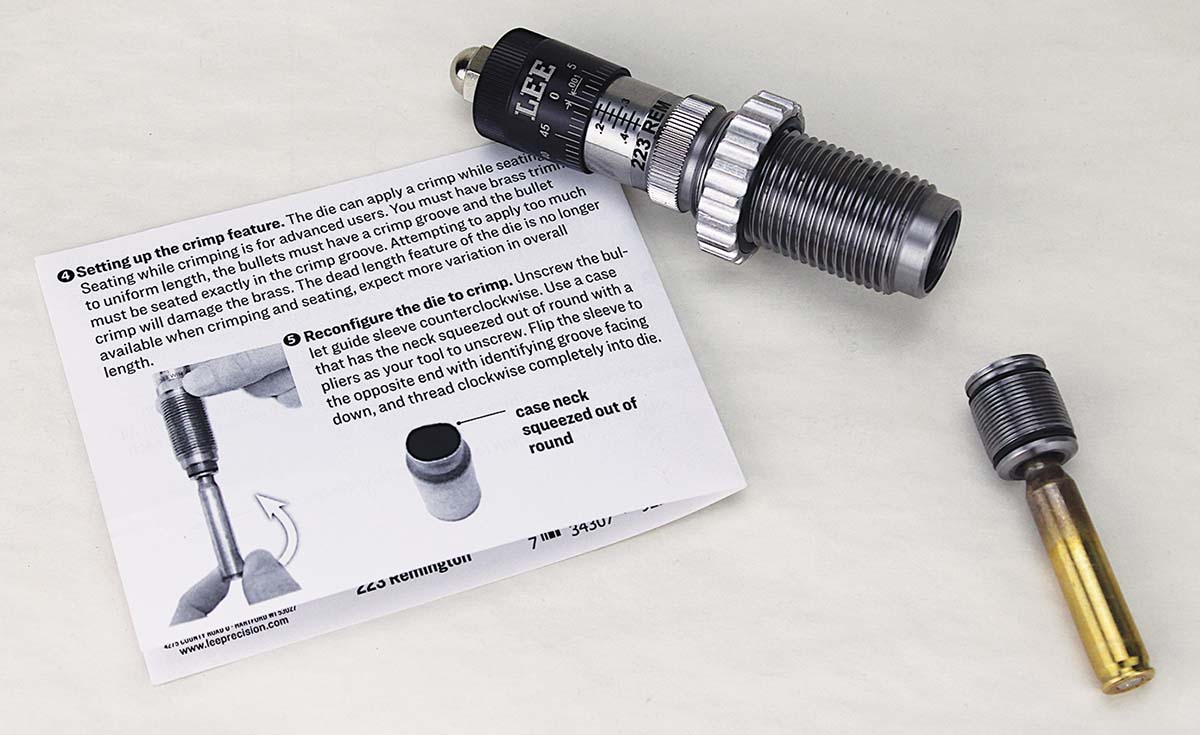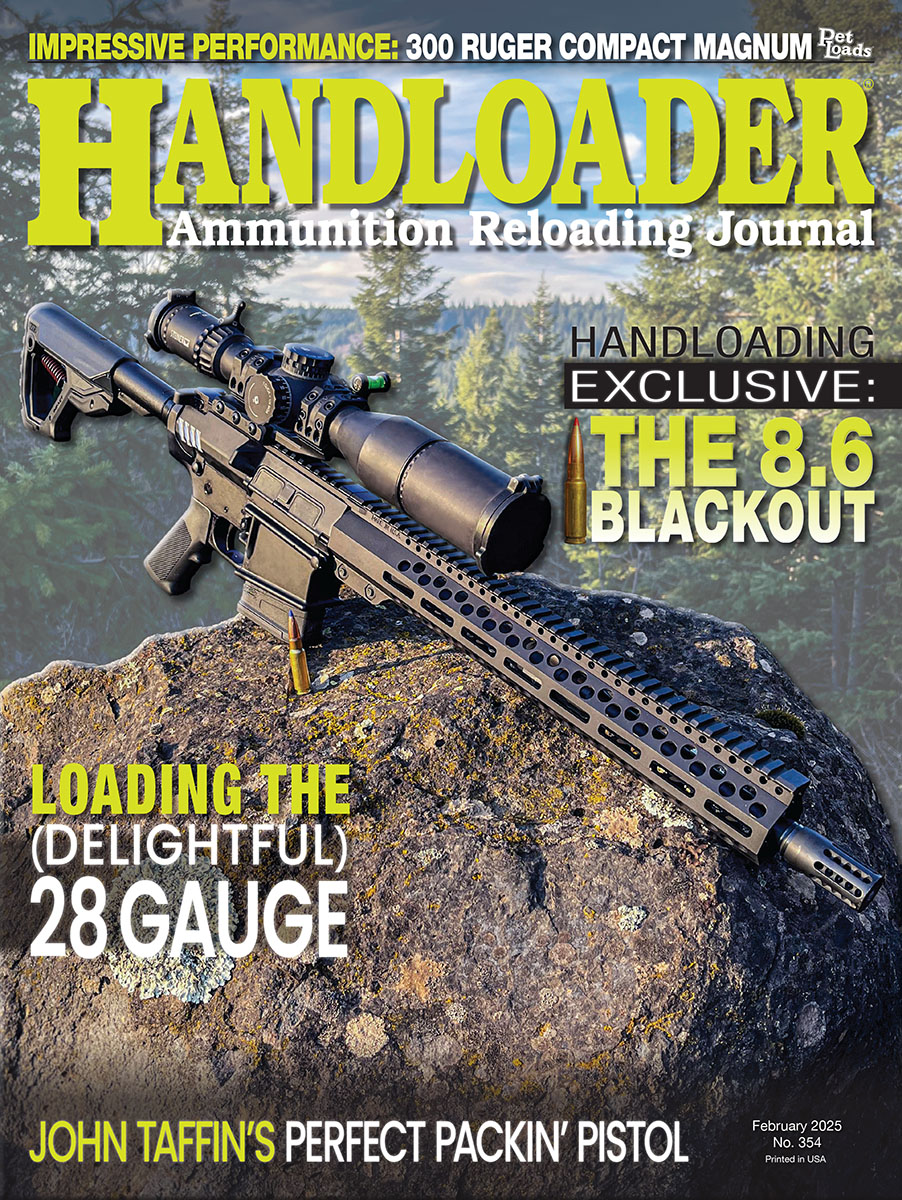From the Bench
Evaluating Lee’s Ultimate Die Set
column By: Art Merrill |
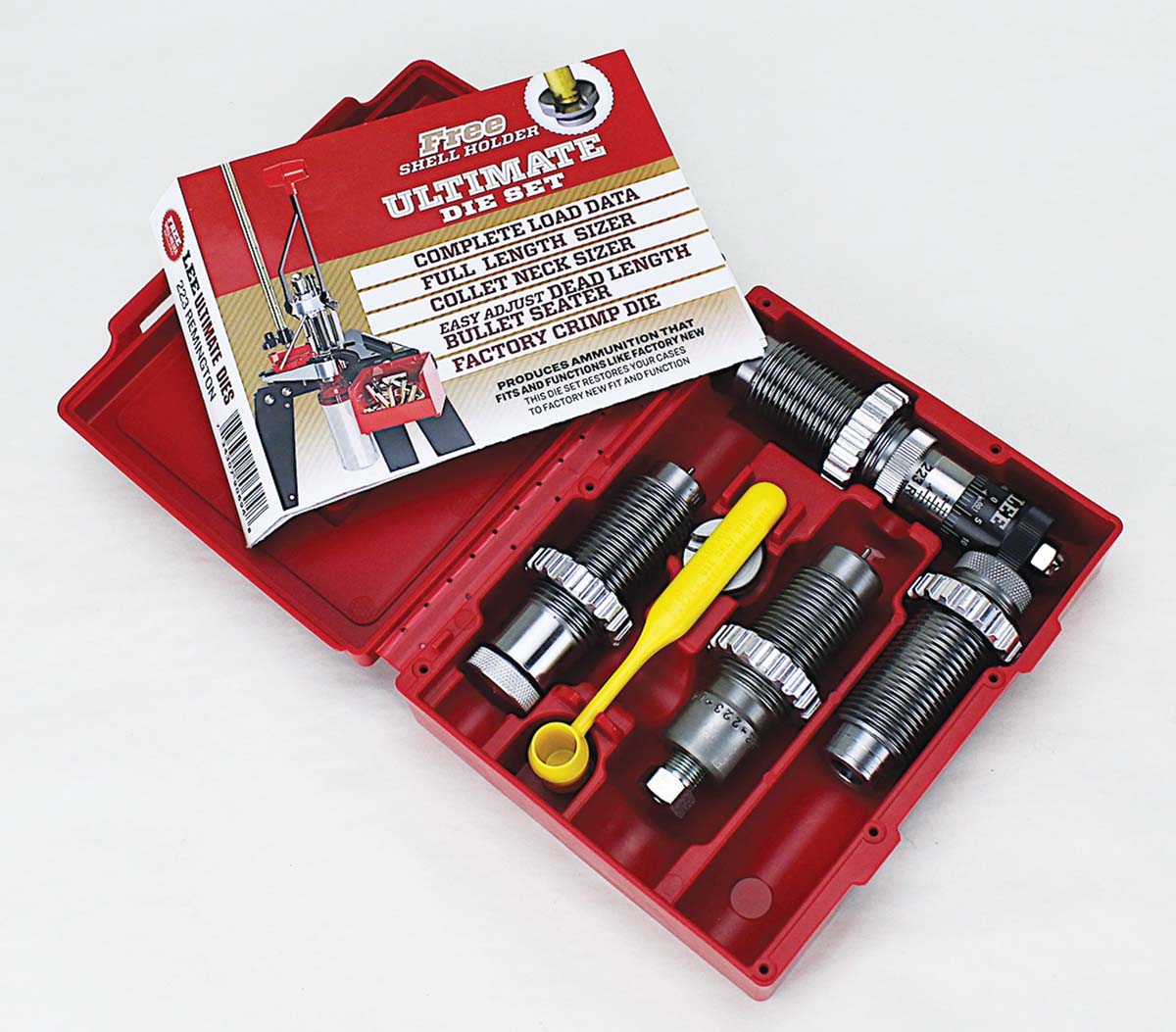
While a dimensional difference of 10 or 12 thousandths of an inch in cartridge-to-cartridge hunting/plinking ammunition might be acceptable, precision ammunition variances are held as close to zero as possible, with .003 inch being the maximum many precision shooters will tolerate. For example, a bullet started .005 inch off the rifling lands, and another started at .009 inch off the lands due to a shorter cartridge overall length, which may be enough to nudge a “flyer” out of the X ring in Long-Range competition.
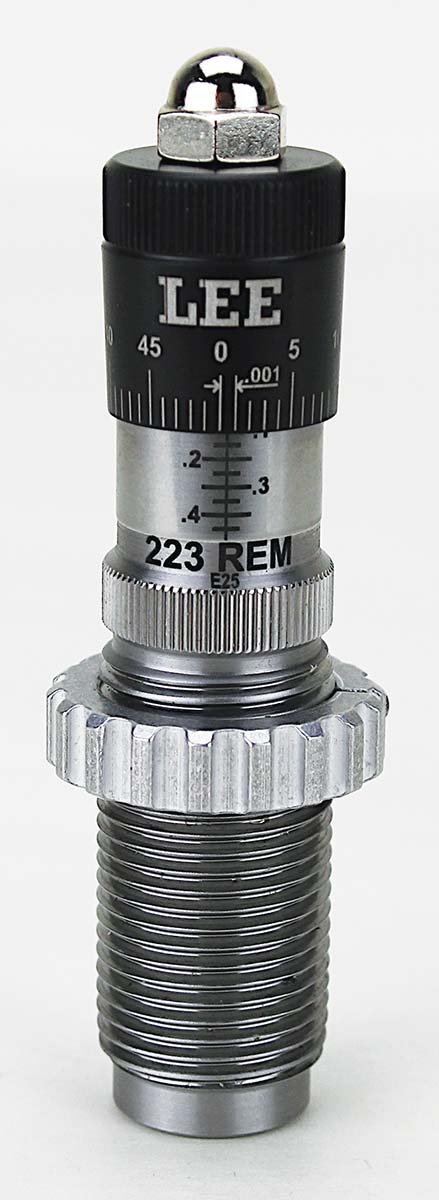
Lee’s full-length resizer features a decapping rod retained by a collet. Attempting to decap a Berdan primed case that somehow found its way into the brass pile typically results in a broken decapping pin or worse, a bent decapping rod. Sometimes, a military case with a crimped-in primer can do the same (it’s a little-known factoid that governments train gorillas to crimp the primers in military ammunition). The Lee die’s collet, however, allows the decapping rod to slide upward instead of bending or breaking the pin, so there’s no break in the resizing action. Simply loosen the collet, push the rod back down, retighten the collet and send a donation to the Save the Apes Foundation.
Of greater interest in building precision ammunition is Lee’s Dead Length Bullet Seating Die topped with Lee’s new Carbide Factory Crimp Micrometer Seater Adapter. Like premium bullet seating dies from some other manufacturers, Lee’s Dead Length die features a floating bullet guide sleeve that seats bullets of many shapes and nose configurations (hollowpoint, softpoint, polymer tip, etc.) with minimum distortion because the sleeve does not contact the bullet nose as does the seating stem in standard seating dies. However, the sleeve’s floating feature does not allow the die to crimp the case neck, but Lee designed the sleeve to be reversible, which then permits crimping, so you can have it either way. Expect more variance in cartridge-to-cartridge bullet seating depth with the sleeve reversed, though.
The new Micrometer Seater Adapter, as its name implies, allows micrometer adjustment of bullet seating depth. Literature with the adapter says each index mark on the thimble represents an adjustment of .001 inch. Because the micrometer thimble rotates smoothly instead of clicking into place at each index mark, I found obtaining exactly .001 inch of travel per mark can depend upon the angle at which one views the micrometer scale on the thimble – but yes, I was able to dial in pretty much .001 inch per mark.
A reasonable test of Lee’s seating die and Micrometer Seater Adapter is to load up premium match-grade bullets and check the seating depth and bullet runout of a sampling of cartridges. Results are also dependent upon case consistency in neck thickness and case length. I utilized once-fired PPU Match Line Ammunition brass given my match preperation, to include some “insurance” inside neck reaming for a best-shot at minimum bullet runout, and careful case trimming to +/- .0005 inch for a fair test of the die’s seating depth consistency.
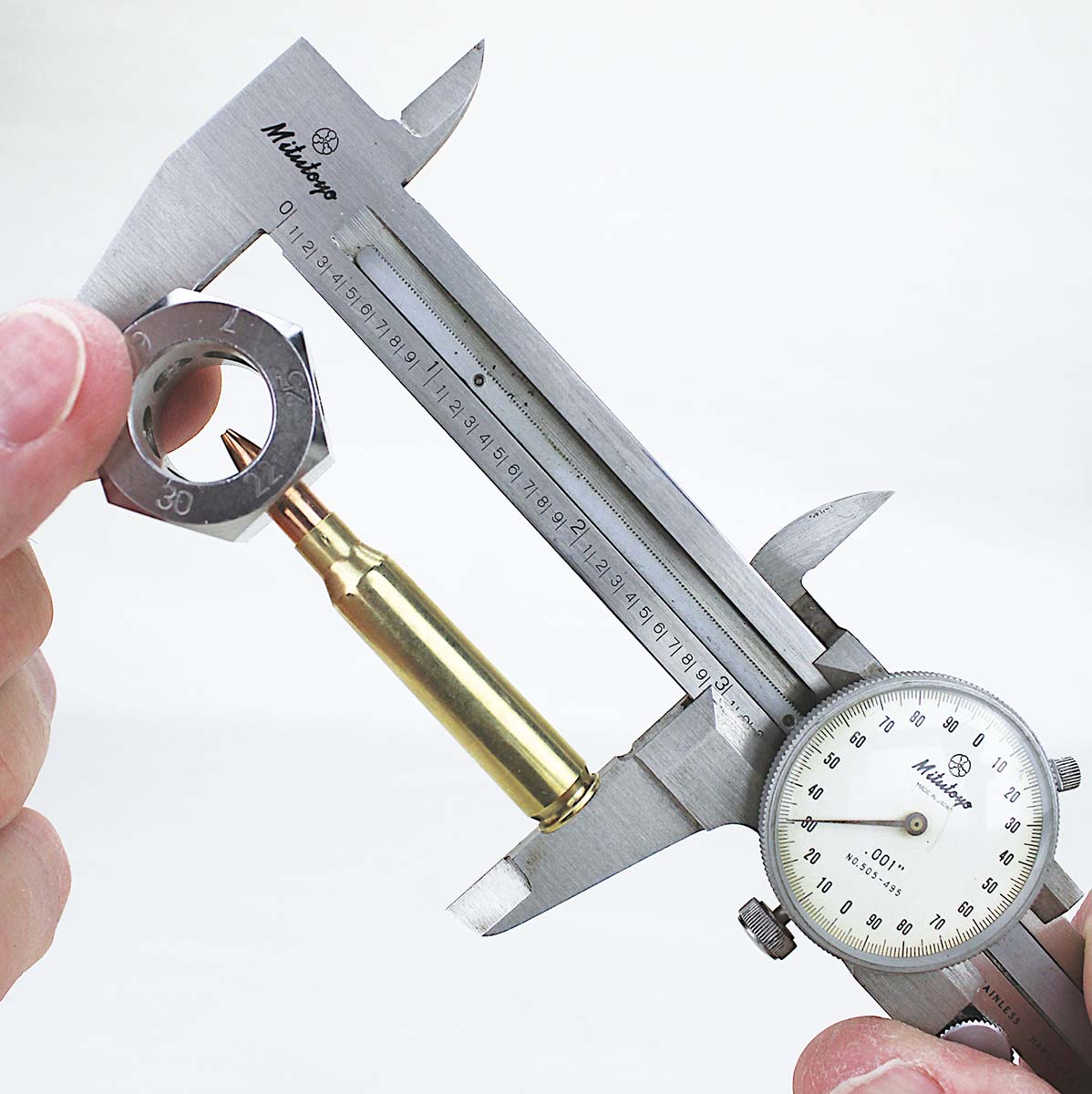
Bullet runout (the relationship of the bullet’s axis to the case axis, or the bullet being “tipped” in the case upon seating) wasn’t quite as consistent. While six of the cases had excellent runouts of .003 inch or less (we can expect runouts of up to .005 inch from premium factory match grade ammunition), runout for four cases measured .006, .007, .009 and .012 inch, which is likely attributable to some error in my case preparation. Perhaps failing to inside-chamfer adequately after trimming, given the consistency of the first six cartridges. Finally, curious to see if the Lee factory Crimp Die included in the Ultimate set would change bullet runout, I next ran the 10 cartridges through the die for a moderate crimp, remeasured the runouts, and found none had changed at all. That’s a good indication that the Lee die put an even crimp on the bullet/case neck for its entire circumference.
Ultimate Die Sets are a bargain, selling at around $45 to $75 depending on caliber and individual retailer. They render the careful handloader excellent ammunition for many shooting applications, but would I use them to load competition ammunition? As I mentioned earlier, consistent COL is critical to landing precise shots way out there. The Lee seating die’s flawless zero variance in that regard makes me sit up and take notice. It’s certainly worth more experimentation to see if I can bring bullet runout to a consistent .005 inch or less while maintaining that COL Holy Grail. Maybe annealing cases…or a different resizing die…or, well, it’s good to have options, isn’t it?
